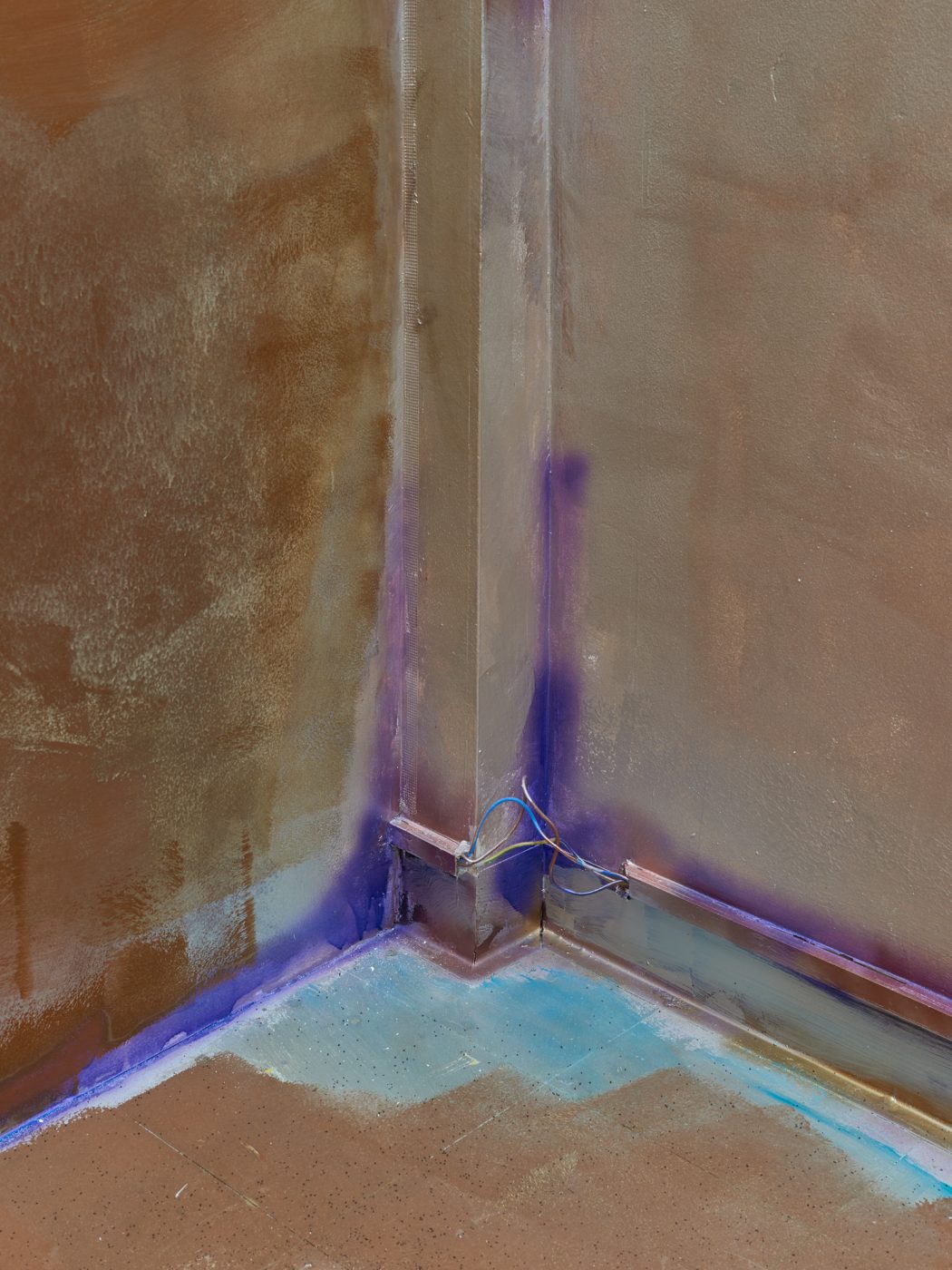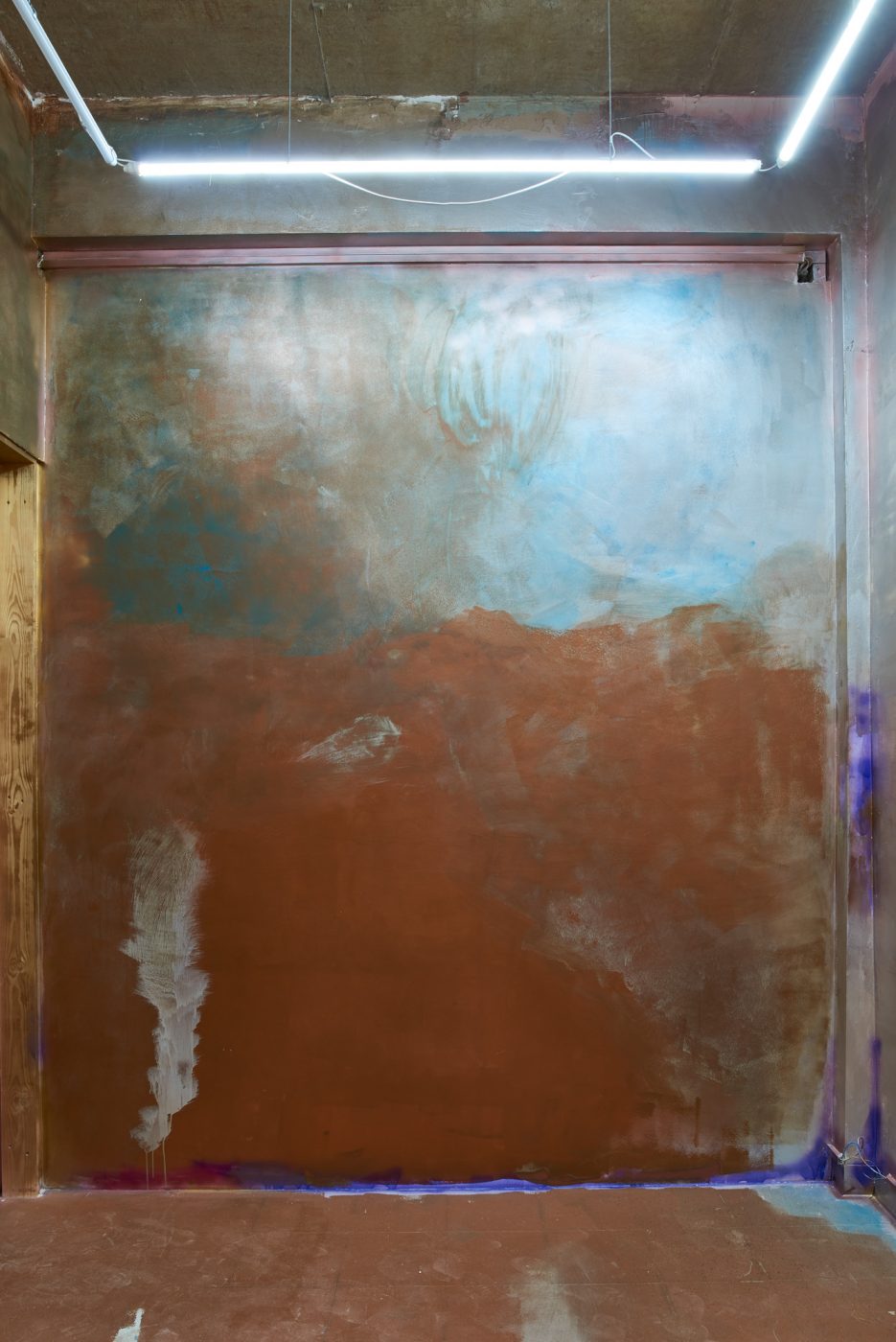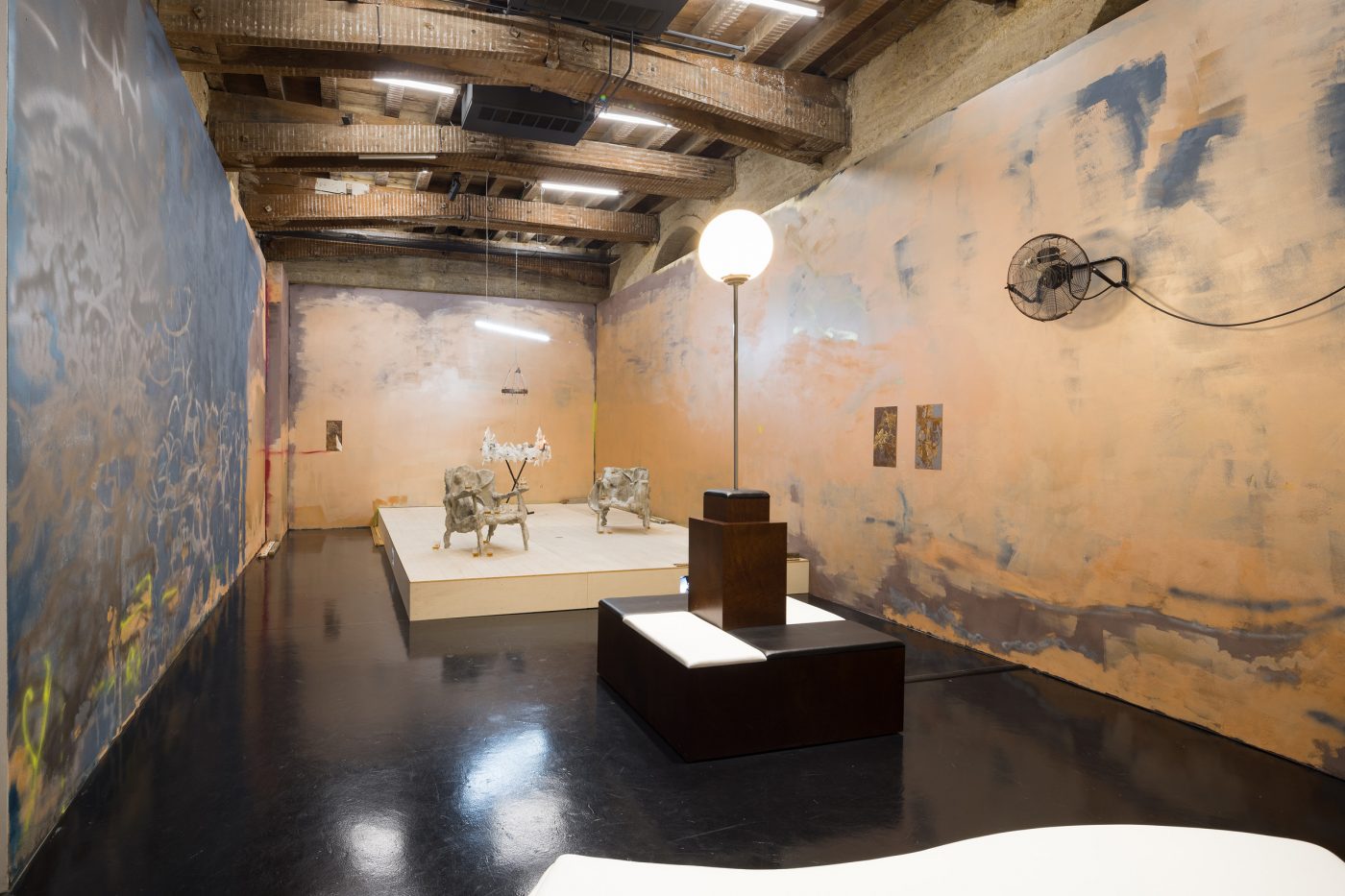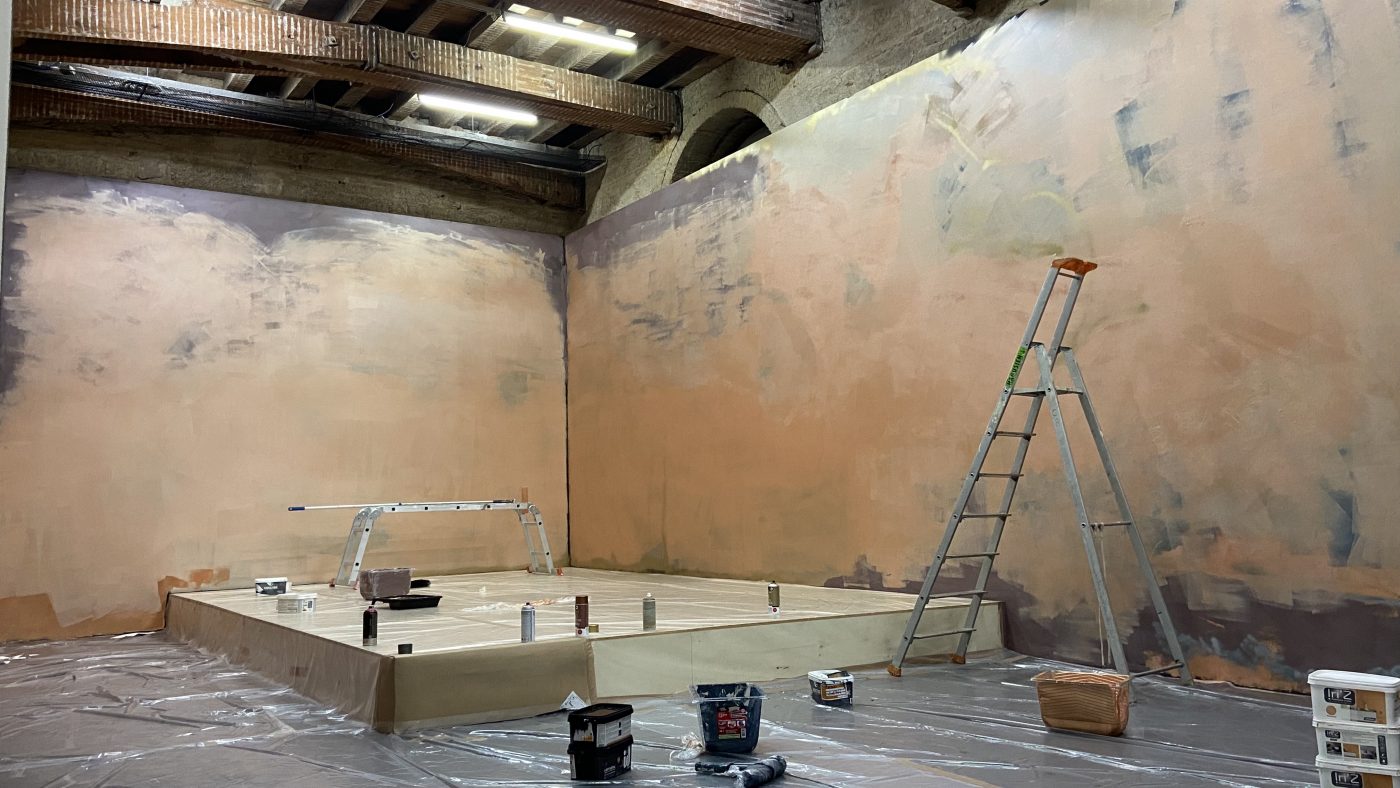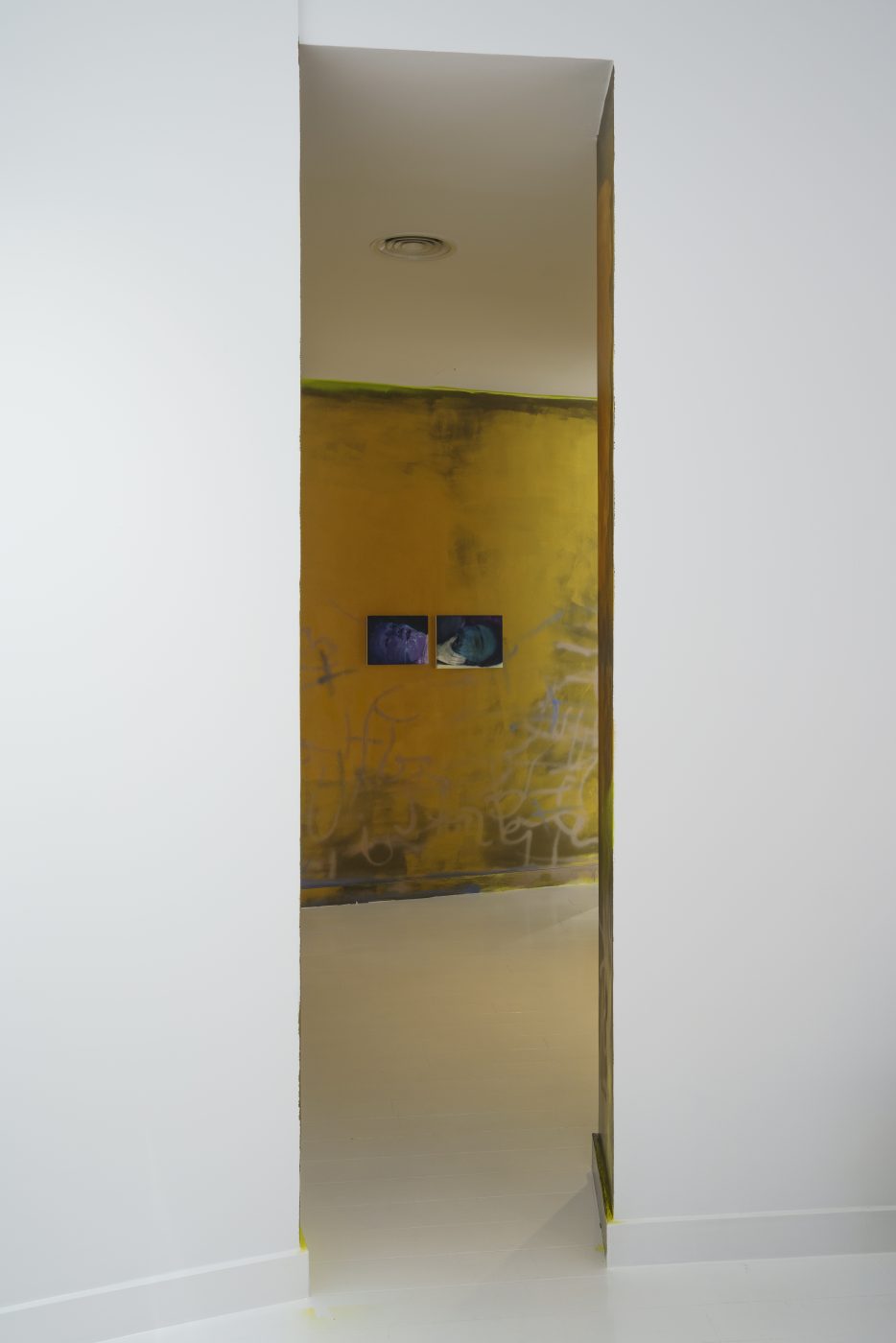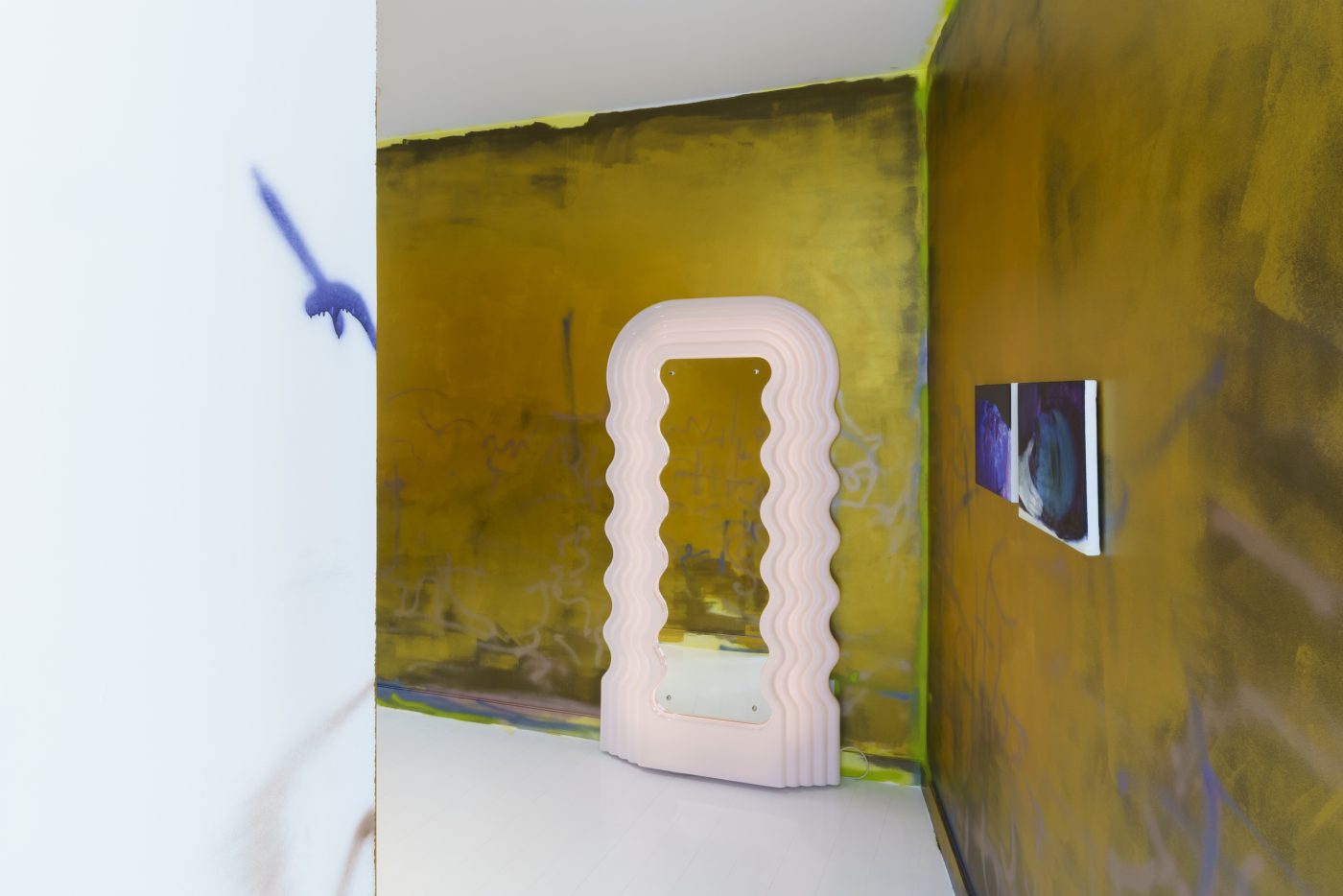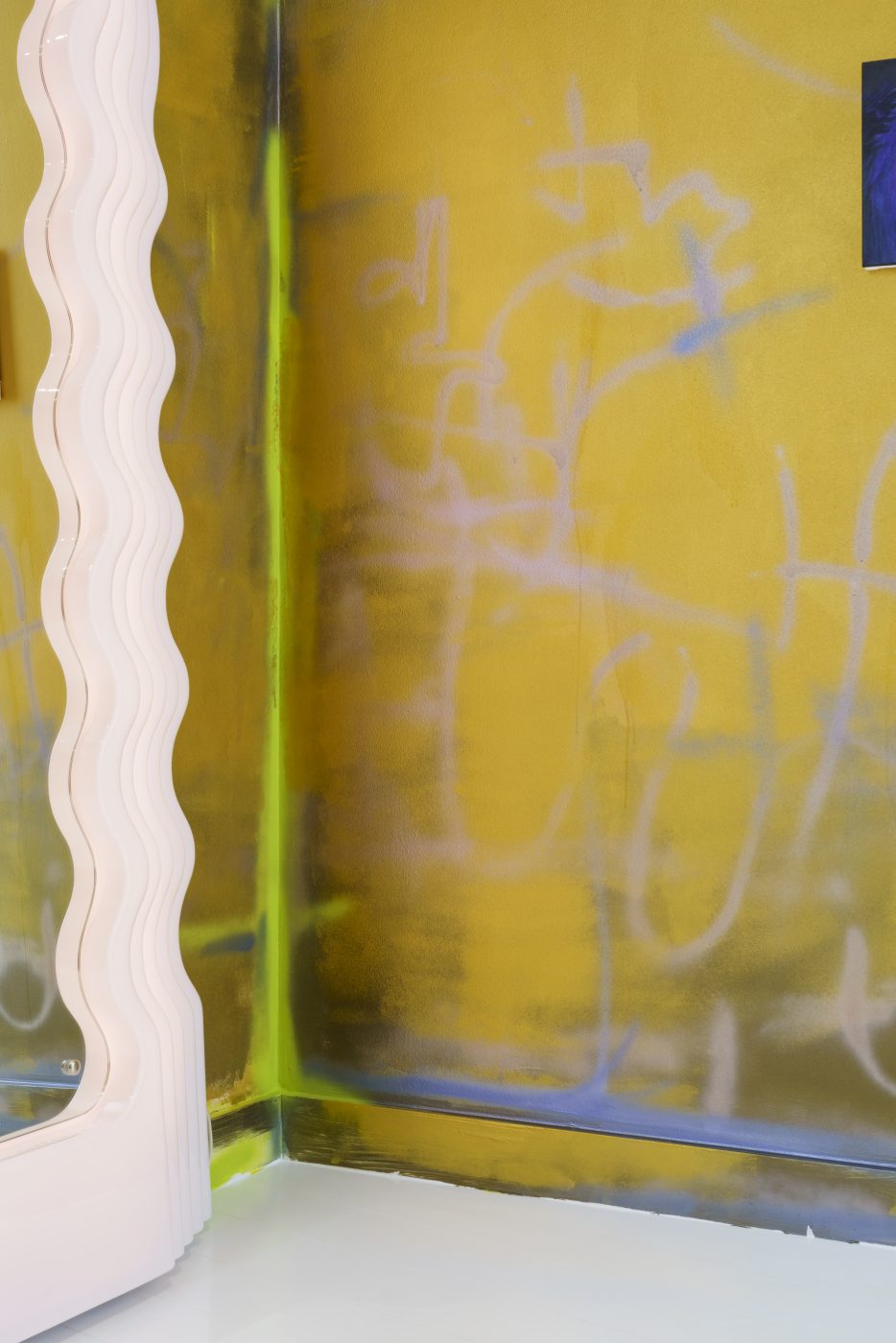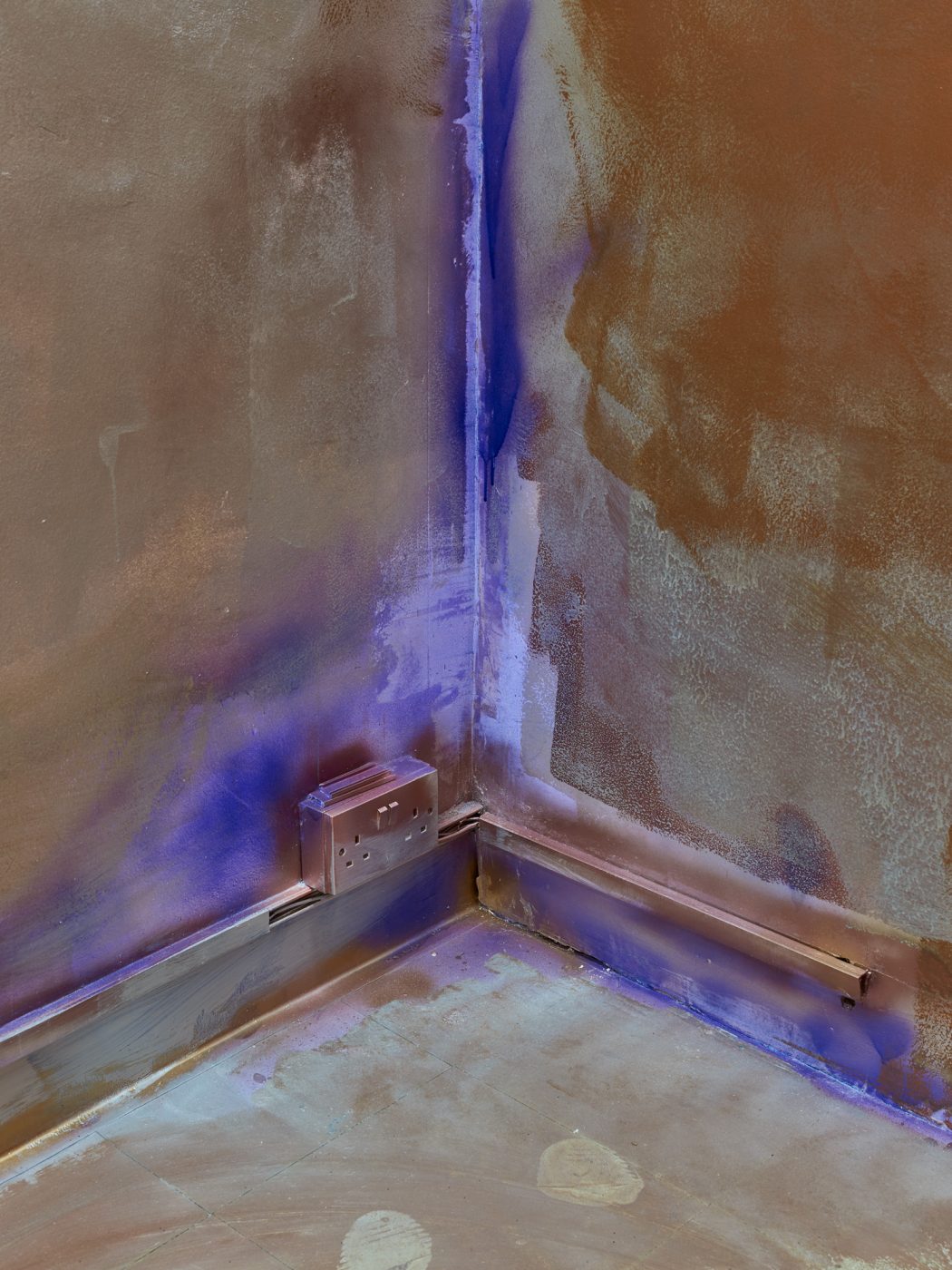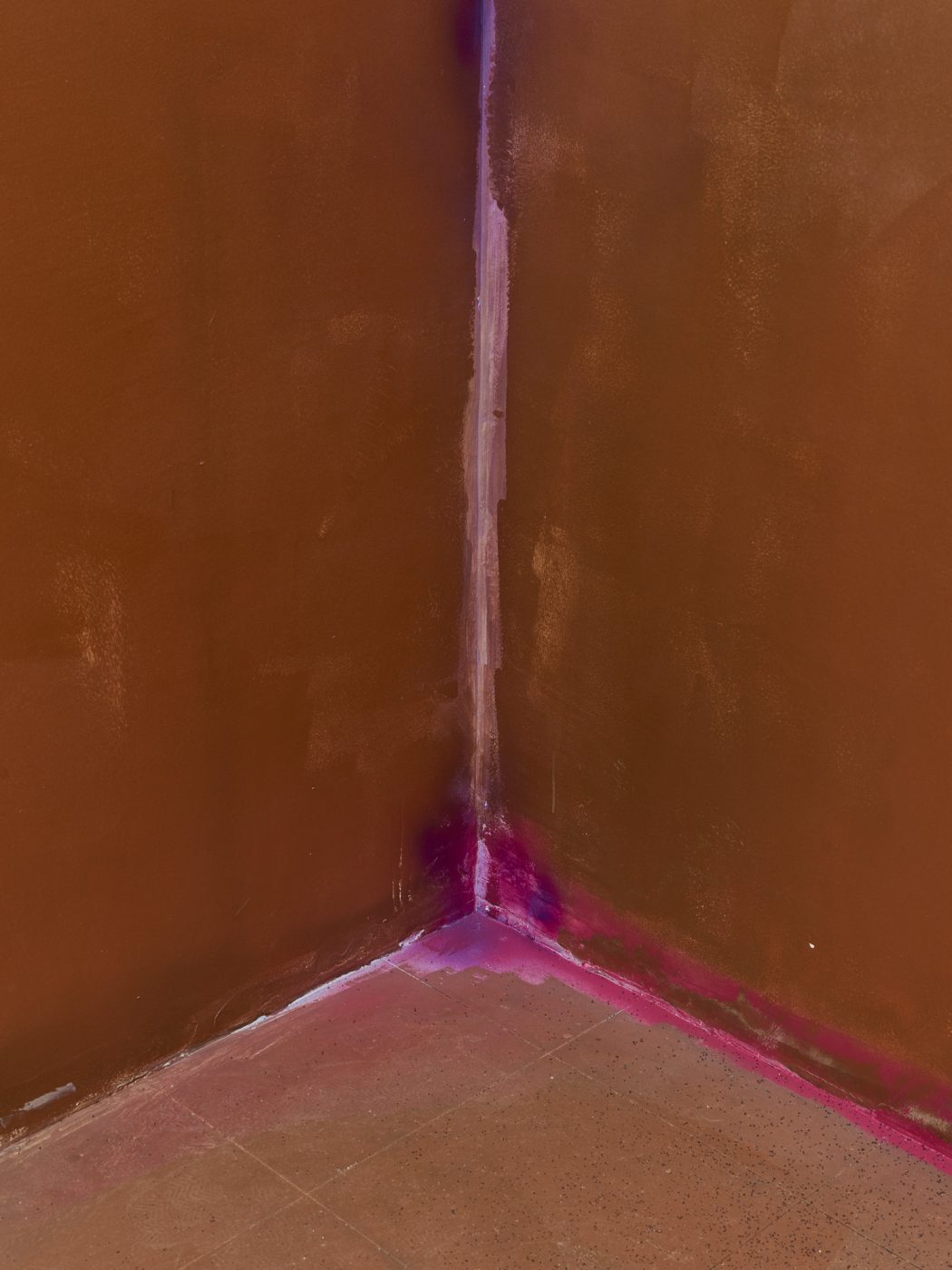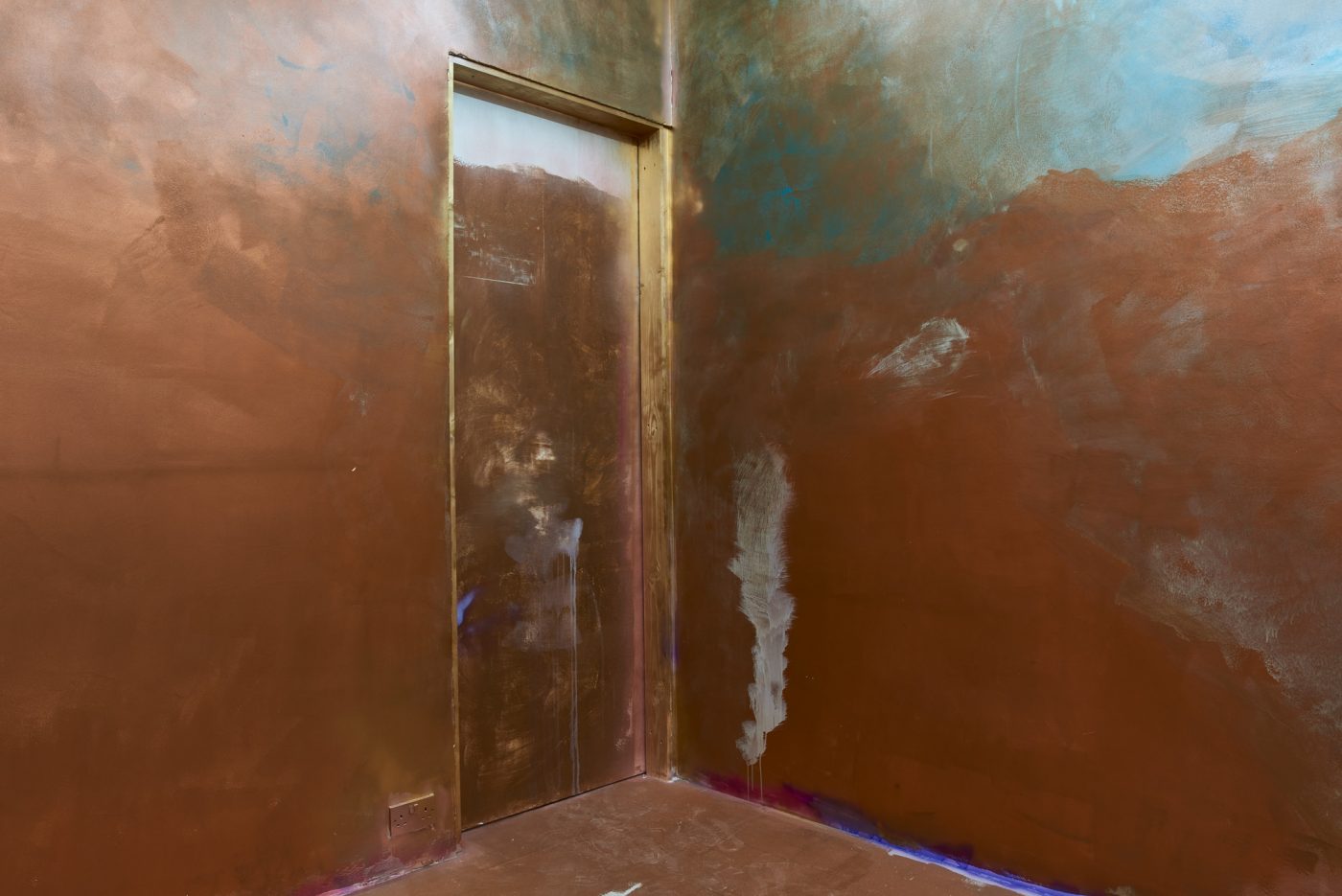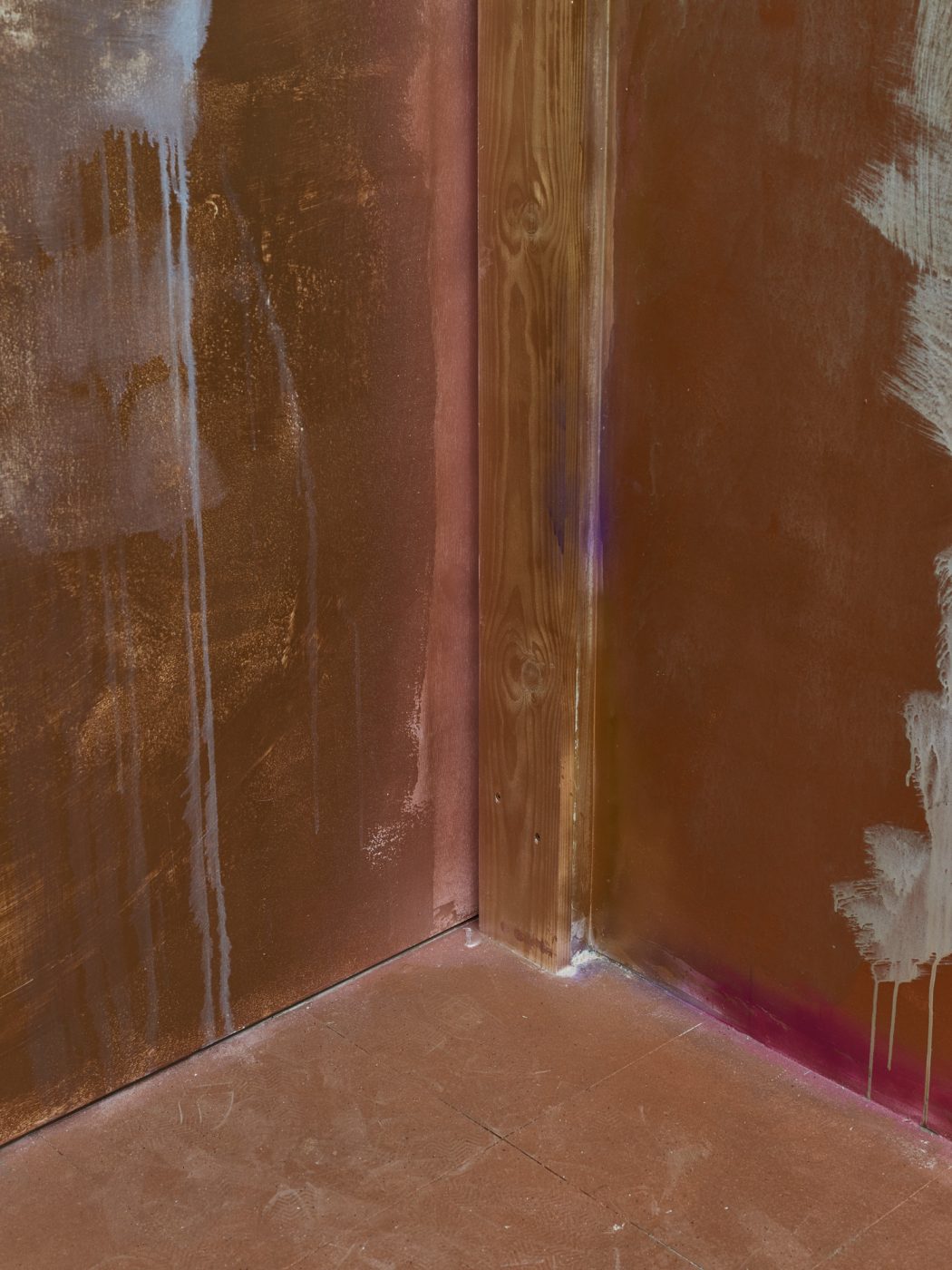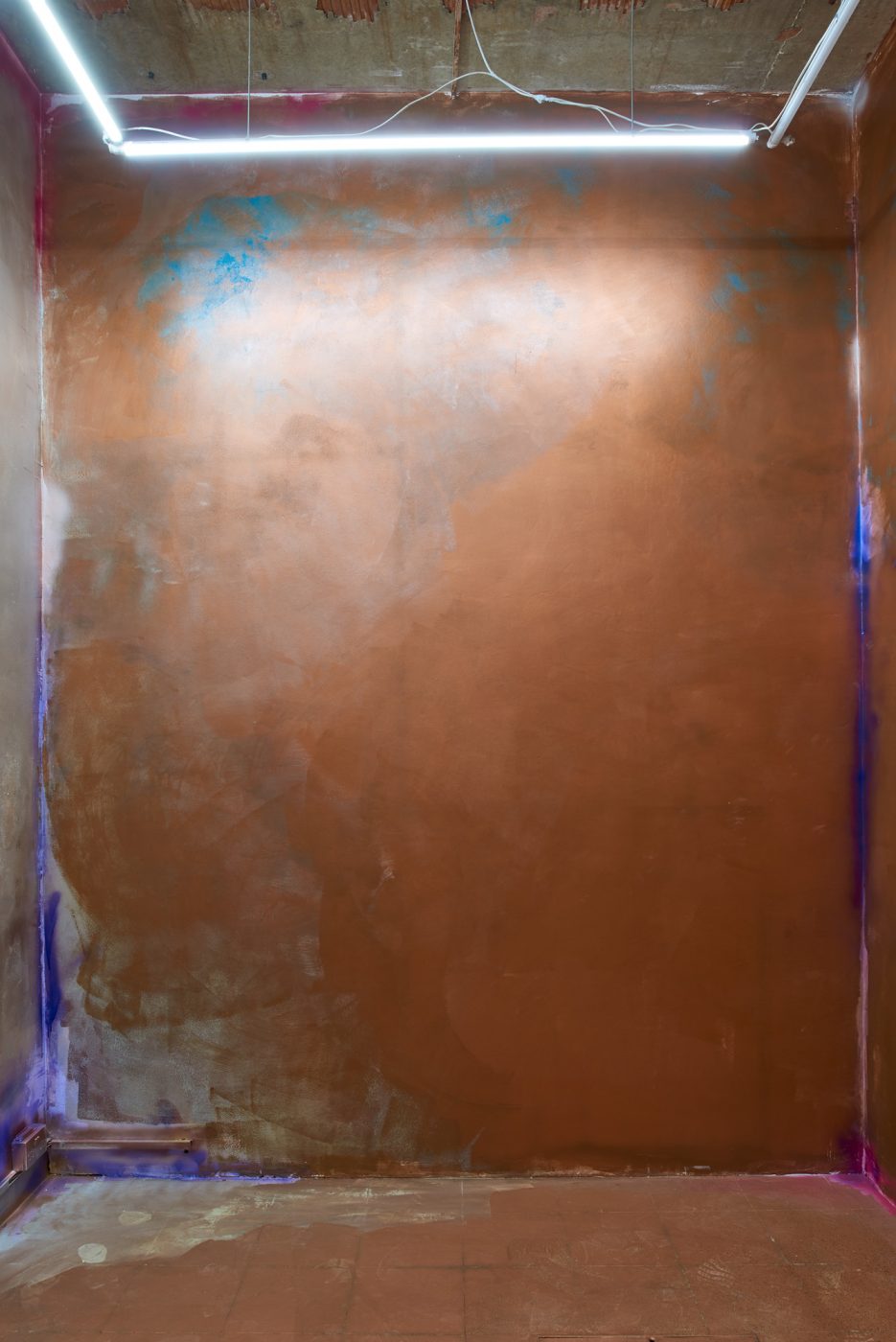—Kids, don´t run around the patio. It will seem bigger
Some say that to rip a doll apart is the child’s way to seek the doll’s soul. It is a test to see whether inanimate things can suffer, whether they live. The child animates her toys – moving, throwing, building them – but is she really sure those things are alive? Is she really sure they’re not? She has no evidence. She might think: “let’s see if violence does anything.” Before that, the doll is, at once, known and unknown, familiar and unfamiliar, cosy and rough.
Some say the child can be ruthless, but we also like to think the contrary. Children need to be cute too and so should be their belongings. Think of that IKEA children’s bed with an added roof, only there to improve cosiness. Think of spaceships, desirable war machines. We love the child but see her faults, projecting onto her what scars our life. The ambivalence is more ours than hers.
Piero Bisello, 2025
2025 —Site-specific exhibition, with pencil drawings and burnt-doll clay, bas reliefs.
Affiliate WIELS, Brussels. Solo show curated by Piero Bisello.
Emil Lime
Hovering in the middle of the exhibition space is the show’s central protagonist, a sculpture that seems to move of its own accord as if possessed. It is suspended by four steel cables connecting it to a central motor programmed by an Arduino that controls its movement. The work’s ramshackle construction was additive, in that Gatón gathered and attached a wide range of disparate materials to the structure’s central aluminum frame.
The piece has been elongated with various width pieces of black java bamboo, held together with copper and aluminum wire and extra strength tape, and adorned with LED lights, high-gloss enamel paint, a plastic rubber snake, a paper bird, facial jewelry, an anchor sticker, and ash. Suspended between and integrated into the pieces of bamboo is a vegan bioplastic, a staple material in Gatón’s practice as of late. Here it has been poured onto pieces of multicolored silk, and hand-burned and dyed with turmeric, paprika, biodegradable glitter, seaweed, charcoal, cocoa, food coloring, eggshells, orange peels, garlic, sparkling soap, curry powder, maca, and ink.
One of the original impetus for the exhibition is the regional fair, and parallels can be drawn between the sculpture on display and a variety of attractions, particularly the mechanical bull and pirate ship. The former has its origins in the rodeo, where a single rider mounts a mechanized bull whose movements replicate the animal’s bucking. Riders are meant to hold on until they are eventually thrown off. The latter is an open-air gondola ride which moves a group of passengers back and forth from a central pendulum. The oscillation of these attractions is mirrored in the exhibition’s palindromic title Emil Lime, whose spelling is the same both forwards and backwards. Esther’s interest in popular spectacles relates to an attraction to instability, fear, and adrenaline, and the ways in which these emotions manifest themselves both in the visitor’s body and in society at large.
This reckless spirit of dizzied excess parallels Spain’s economic history in the early 2000s, with the construction boom and the political value ascribed to consumption and accumulation. This trajectory was cut short by the crash in 2008, the critical year when the CA2M Museum itself was constructed. Emil Lime harkens to a moment just before the breakdown of perhaps ill-founded hopes, expectations and projections. The sculpture replicates a nostalgic and fevered delirium through its seemingly erratic choreography of dips, swings, drops and rattles.
2023 —Motorised sculpture: bamboo canes, aluminium structures, programmed engines, enamel paint, glitter, stickers, rubber toys and vegan bioplastic. 5 x 2 x 2 metres.
CA2M Museum in Madrid. Solo show curated by Cory John Scozzari.
A book about this show was produced by WIELS Brussels and CA2M Madrid.
Asleep on a feather bed, with black curtains around him, an inverted torch. (The Earth was full of poppies)
This light installation for the façade of C3A in Córdoba, was produced by abstracting and combining a selection of self-absorbed videos, including beaten eggs, magic tricks (how to make a coin disappear), documentaries on butterflies and submersion, knife sharpening, tutorials on how to train to look directly into the eyes, and whispering.
The intervention aims to intensify the relationship between light and human behaviour, turning the outer wall of the C3A into a kind of hypnotising machine. The light in movement is used as an interlacing that holds the distracted gazes of those who stroll along the riverside, obliquely affecting them. The title describes how Hypnos, the Greek mythological god of sleep and slumber, has been commonly depicted.
The project looks into techniques such as circadian lighting, trance-inducing systems, flickering, phosphorescent screen glows and strobe light to play with the correspondences between lighting and rhythms of life. Light is the engine that synchronises us with the day, sleep (and lack thereof), and multiple states of mind. For example, shock, tenderness, nervousness, tranquillity, delight or good concentration.
2023 – Led lights, 3D animation on façade, switched on every evening, from sunset to midnight. 6´ 5″, 100 metres in width, by 12 meters in height.
C3A Andalucía Museum, Córdoba, Spain. Site-specific solo commission.
Adrenaline Querubín
The painting covers the room — it spreads its metallic effects over the walls, floors, plugs, and wiring, implicating every surface available. It coats them without discrimination, makes them all one picture surface, and scrambles the usual uses and codes of the space into a single, flowing surface, caught between architecture and image, communicating as both. It functions like an engine, working with an unsteady rhythm that includes vertigo, tossing, and abrupt stops.
The room is brought into communication with colour, gesture, ground, and form – inherent elements of painting – but also with the movements of air (wind or mechanical air conditioning), with the memory of the sky and the way that sunlight cuts across the clouds at the end and beginning of the day (only a memory, since you are inside the engine), and with the way that light, artificial or otherwise, falls across a surface and transforms it, with each turn of the head.
The room is expressive, built from the gestures of a graffiti artist or home decorator. It has undone the architectural cliches of wall, plug, and floor, but this is only one of its mechanical tricks. Another might be to involve you with its refusal to discriminate – you might also begin to associate with surfaces, plugs and plastic tubing, or with the movements of light and air through space that has been changed by their passage.
Adrenaline is a chemical in the body that heightens awareness and increases sensitivity in response to danger and threat – in a state of high adrenaline, the world around you begins to lose its familiar cliches, and its workings are exposed to the sensitive eye in their most concrete and direct forms. Querubín are Cherubs: angels who are now frequently depicted as small, plump, winged boys, who once held a prominent place in the angelic hierarchy, existing closest to the Throne and singing praise eternally. Their bodies were abstract and composed in light.
‘Time machines’ become spaces for an exception, for fantasy, a vortex to access a space other where everything may be possible. The site-specific intervention of Esther Gatón, in the style of a dysfunctional time machine, proposes a journey that starts with form – that surrounds us, insulates us, a ‘non-space’ – and transforms to speed. We navigate through an intuitive and kaleidoscopic formal process, waving between contention and journey. Gravity pumps and dissolves when entering the room. The artist proposes an attentive gaze at a stunning speed that absorbs us: a celebration of pure life collapsing. It shakes us and, finally, it expels us, or rather holds us, depending on what we find there.
Excerpt from the curatorial text by Cristina Herràiz Peleteiro.
2020 — Spray and wall-paint on walls, plugs and floor.
Where Water Rumbles, Metalloids, curated by Cristina Herràiz Peleteiro, Intersticio London.
Descripción de Un Estado Físico, curated by Pepe Suárez, at Elba Benítez Gallery, Madrid.
Le Club Poisson-Lune, curated by Cédric Fauq, CAPC Bordeaux.
Art-O-Rama with Cibrián, Marseille.
Adrenaline Querubín at Where Water Rumbles, Metalloids, interview by Emma O´Brien, This is Tomorrow.
Ugly Enemies
A Ugly Enemies is a site-specific intervention made of up a complex series of layers, feints, and screening devices. The overlapping layers are arrayed such that movement through the gallery can easily become circular or recursive — you can find yourself lead down or up, inwards or outwards, through and between its fixed scenes, in a manner similar to an amusement ride. Encounters with the work will shift and change depending on your relative position, your point of view, or the time of the day as the light in the room changes with the position of the sun or the intensity of traffic.
The pieces that make up the show collaborate and compete with the architecture of the gallery; they lead visitors through the space and are themselves active agents in this wandering passage. Architectural features such as the stairway, lift mechanisms, protective glass, and fake marble tiles are implicated in the show’s functioning. There are steel pathways and hanging entrances on display beside flat images (trompe l’oeil on the floor, plastic jewellery, images applied directly to the walls), red-flickering lights, and a series of small clay sculptures/creatures, partially hidden through the show. These disparate elements compose the installation, but also serve as the set for the filming of El Que Monta Cargas (He Who Rides Loads), a video work that is also on display inside the installation.
In another layer, beyond what is physically present in the gallery, the work enters into correspondence with two texts; one by the artist, titled Sunburns, and the other by the theorist and risk analyst Benedict Singleton, titled Gyropolitics. These texts introduce the animating spirit of the installation, which moves through the space like breath moves in a living body— they discuss the figure of the trap, the practice of trapping, and describe an entire landscape of signs, images, and environments that are designed to betray, to switch their face. All stable relationships are thrown into question. The trap is not put in place to ensnare the viewer; it is something omnipresent, a total environment, and artists, visitors, artworks, and galleries alike are thrust into a space where the distinctions between stable positions blur together.
These connotations locate it in a radically utilitarian space; a machine is something defined by its function; which is not just performed independently (only the simplest and smallest machine does things on its own) but is likely either to be incorporated into larger systems, or to be an integral part of a larger machine, an individual component integrated into larger systems. A machine is always a beginning, it gestures toward vaster formations.
Excerpt from the mentioned essay by Esther Gatón, Sunburns.
Gyres are formed when a cluster of people become locked into patterns of pre-emptive manoeuvre with respect to one another. […] Compel others, instead, to strategise, occupying their minds with attempts to understand where you are leading them, or what you want from them, or what you will do next.
Excerpt from the text written to accompany this show, by Benedict Singleton, Gyropolitics.
There are certainly other layers as well, but their number and depth will be dependent on the visitor, and how far and deeply they are willing to enter into productive collaboration with the trap works and the trap gallery that surrounds them.
2020-21 —Digital video, 4’09”. Mixed-media installation: wood, PVC strip curtains, spotlights, clay, plastic jewellery, steel platforming, leaves, water, glitter, printed silk.
Solo show at Cibrián, Donostia-San Sebastián, Spain.
The installation was granted the Veepee Art Award, ARCO Madrid 2021
Suppress inheritance, review by Andrés Carretero A* Desk


